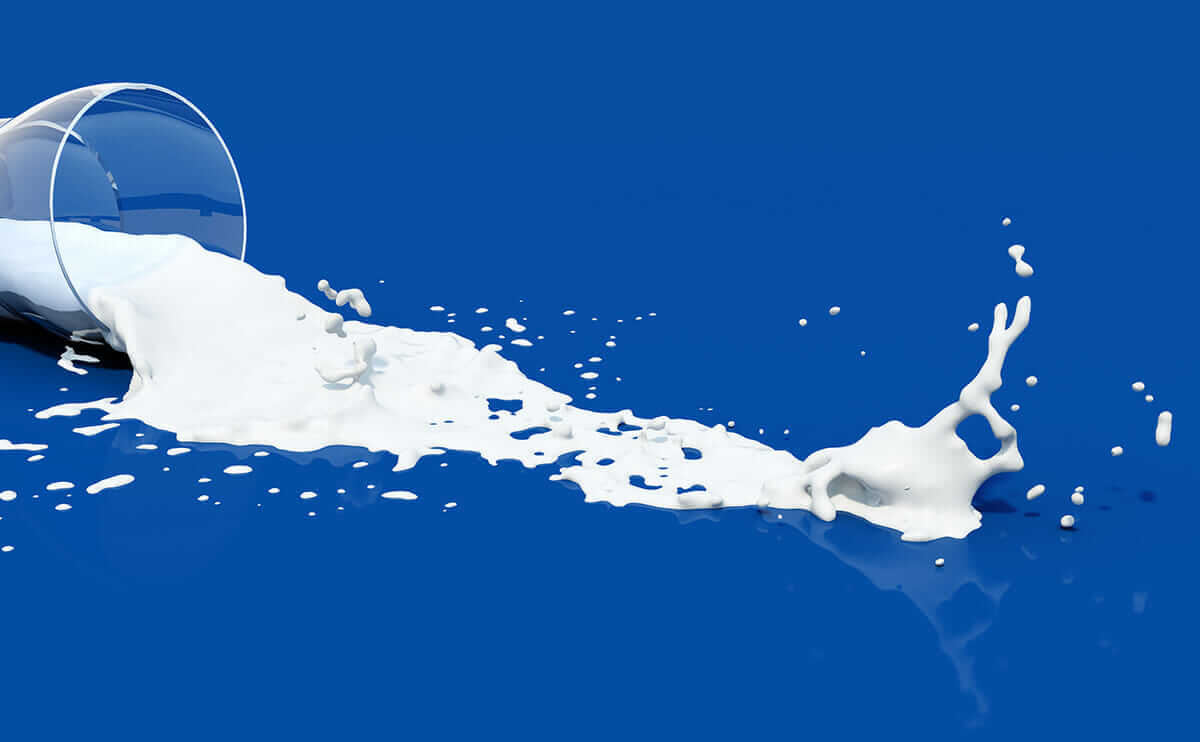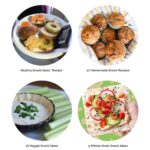Say Goodbye to Dairy, Hello to Delicious! Embark on a culinary adventure that redefines dairy-free cooking. This guide unveils a world of creamy sauces, decadent cheeses, and fluffy baked goods, all crafted without a single drop of dairy. Discover the secrets to transforming everyday recipes into vibrant, dairy-free masterpieces, exploring an array of plant-based alternatives that are both nutritious and surprisingly delightful. Prepare to be amazed by the versatility of ingredients like nuts, seeds, and innovative plant milks, as we unlock the potential for delicious, dairy-free living.
From mastering the art of cashew cream sauces to crafting perfectly textured dairy-free cheeses, we’ll explore techniques and recipes that cater to all skill levels. We’ll delve into the nutritional benefits of dairy-free options, comparing them to their dairy counterparts, and offering tips for substitutions in both sweet and savory dishes. Get ready to expand your culinary horizons and embrace a new era of flavor and innovation.
Delicious Dairy-Free Alternatives
Embarking on a dairy-free journey doesn’t mean sacrificing creamy textures, rich flavors, or nutritional benefits. A wide array of delicious and versatile alternatives are available, each offering a unique profile to enhance your culinary creations. From the subtly sweet to the robustly nutty, these options cater to diverse palates and dietary needs.
Popular Dairy-Free Milk Alternatives
Choosing the right dairy-free milk depends on individual preferences and culinary applications. The following table provides a comparative overview of five popular options, highlighting their nutritional profiles and ideal uses.
| Milk Type | Nutritional Highlights | Best Uses | Taste Profile |
|---|---|---|---|
| Almond Milk | Low in calories, good source of vitamin E, often fortified with calcium and vitamin D. | Coffee, smoothies, baking (in some recipes). | Mildly sweet, nutty flavor; can vary depending on brand and added ingredients. |
| Soy Milk | Complete protein source, high in protein and iron, often fortified with calcium and vitamin D. | Cooking, baking, cereal, smoothies. | Slightly beany flavor; some brands offer vanilla or other flavorings. |
| Oat Milk | Good source of fiber, creamy texture, often fortified with calcium and vitamin D. | Coffee, smoothies, oatmeal, baking. | Naturally sweet and creamy; some brands have a slightly oaty flavor. |
| Coconut Milk (from the flesh, not the water) | High in fat and calories, good source of saturated fat, provides creaminess. | Curries, soups, smoothies (for richness), baking (certain recipes). | Rich, coconutty flavor; can be intensely sweet. |
| Cashew Milk | Creamy texture, naturally low in sugar, good source of healthy fats. | Smoothies, sauces, soups (for creaminess). | Mildly sweet, creamy, nutty flavor. |
Dairy-Free Recipes
The versatility of dairy-free milks shines through in diverse culinary applications. Here are three recipes showcasing the unique qualities of different alternatives.
Recipe 1: Creamy Almond Milk Oatmeal
This recipe utilizes almond milk’s delicate nuttiness to complement the warmth of oatmeal. Imagine the soft texture of the oats, perfectly balanced by the subtle sweetness of the almond milk, creating a comforting and nutritious breakfast.
Recipe 2: Savory Soy Milk Mushroom Soup
The hearty nature of soy milk provides a robust base for this creamy mushroom soup. Picture a velvety smooth soup, enriched with the earthy aroma of mushrooms, showcasing the savory side of soy milk in a comforting bowl.
Recipe 3: Coconut Milk Mango Smoothie
The richness of coconut milk enhances the tropical sweetness of mango in this refreshing smoothie. Visualize a vibrant, creamy smoothie, bursting with the sweet and tangy flavor of mango, perfectly complemented by the creamy texture and subtle coconut notes.
Homemade Almond Milk
Creating your own almond milk allows for complete control over ingredients and sweetness. This simple process yields a fresh, flavorful milk alternative.
Step-by-Step Guide:
- Soak 1 cup of raw almonds in water overnight.
- Drain and rinse the almonds thoroughly.
- Blend the almonds with 4 cups of fresh water until completely smooth.
- Strain the mixture through a nut milk bag or fine-mesh sieve, pressing to extract as much liquid as possible.
- Sweeten to taste with a touch of maple syrup or agave nectar (optional).
Tips for Optimal Flavor and Texture:
Soaking the almonds overnight softens them, resulting in a creamier milk. Adjust the water ratio to achieve your desired consistency. For a richer flavor, use roasted almonds.
Mastering Dairy-Free Cooking Techniques

Dairy-free cooking opens a world of culinary possibilities, but mastering certain techniques is key to achieving delicious and satisfying results. Understanding how to emulsify, thicken, and create creamy textures without dairy is crucial for replicating the richness and mouthfeel we associate with traditional recipes. This section will explore essential techniques and provide a practical guide to creating a creamy dairy-free sauce.
Dairy-free cooking relies on understanding the unique properties of alternative ingredients and adapting techniques accordingly. Unlike dairy, many plant-based alternatives behave differently when heated or combined, requiring adjustments to achieve desired consistencies and flavors.
Emulsifying, Thickening, and Creating Creamy Textures
Successfully emulsification, thickening, and creating creamy textures are fundamental to delicious dairy-free cooking. Emulsification, the process of combining two immiscible liquids (like oil and water), is crucial for creating smooth sauces and dressings. Thickening agents, such as arrowroot powder, cornstarch, or xanthan gum, are essential for achieving the desired consistency in sauces, soups, and puddings. Creating creamy textures often involves using high-fat plant-based alternatives like coconut cream, cashew cream, or silken tofu, blended until smooth and velvety.
Creating a Creamy Dairy-Free Cashew Cream Sauce
This step-by-step guide demonstrates how to make a luscious dairy-free sauce using cashew cream as a base.
Step 1: Preparing the Cashews
Soak ½ cup raw cashews in hot water for at least 30 minutes, or preferably overnight. This softens the cashews, resulting in a smoother, creamier texture. *(Image description: A bowl filled with plump, pale cashews submerged in hot, clear water. The cashews appear slightly translucent from the water absorption.)*
Step 2: Blending the Cashew Cream
Drain the soaked cashews and add them to a high-speed blender along with ½ cup of water. Blend until completely smooth and creamy, scraping down the sides as needed. *(Image description: The blender is whirring, the contents initially appearing chunky and milky white. As the blending progresses, the mixture transforms into a thick, ivory-colored cream, almost resembling heavy cream in consistency.)*
Step 3: Incorporating Flavor
Add 2 tablespoons of nutritional yeast for a cheesy flavor, 1 tablespoon of lemon juice for brightness, 1 clove of minced garlic, and salt and pepper to taste. Blend until well combined. *(Image description: The creamy cashew base now takes on a pale yellow hue from the nutritional yeast. The mixture appears smooth and glossy, reflecting light.)*
Step 4: Simmering (Optional)
For a richer, more developed flavor, gently simmer the cashew cream in a saucepan over low heat for 5-10 minutes, stirring constantly. *(Image description: The cashew cream gently simmers in a small saucepan. Small bubbles appear on the surface, indicating gentle heating. The color remains consistent, but the aroma becomes noticeably richer and more savory.)*
Step 5: Serving
Serve the sauce warm or cold, over pasta, vegetables, or as a dip. *(Image description: The finished cashew cream sauce is poured over a plate of steaming pasta. The sauce coats the pasta evenly, creating a glossy, appetizing finish. The color is a warm, inviting ivory with flecks of garlic visible.)*
Proper Ingredient Storage and Preparation
Proper storage and preparation of ingredients are vital for optimal results in dairy-free cooking. Many plant-based alternatives, such as nuts and seeds, require specific handling to maintain their quality and prevent spoilage. Soaking nuts before blending, as demonstrated in the cashew cream recipe, significantly improves their texture and creaminess. Proper refrigeration and freezing techniques are essential to extend the shelf life of dairy-free ingredients and maintain their freshness. Always refer to individual product packaging for specific storage instructions. Using fresh, high-quality ingredients will significantly enhance the taste and texture of your dairy-free creations.
This journey into the world of dairy-free cooking has revealed a treasure trove of delicious possibilities. We’ve explored creamy alternatives, mastered the art of dairy-free cheesemaking, and conquered the challenges of baking without dairy. The key takeaway? A dairy-free lifestyle doesn’t mean sacrificing flavor or texture. With a little creativity and the right techniques, you can create culinary masterpieces that are both satisfying and surprisingly delicious. So, say goodbye to dairy limitations and hello to a world of exciting, flavorful, and healthy possibilities!
Frequently Asked Questions
Can I freeze dairy-free milk?
Yes, most dairy-free milks freeze well. However, the texture might change slightly after thawing.
How long do dairy-free cheeses last?
This depends on the recipe and storage. Refrigerate and consume within the recommended timeframe for the specific recipe.
Are all dairy-free products suitable for vegans?
While many are, always check the ingredient list to ensure it aligns with vegan dietary requirements. Some may contain honey or other animal products.
What are the best substitutes for butter in baking?
Many options exist, including vegan butter, applesauce, mashed banana, or coconut oil, depending on the recipe.


